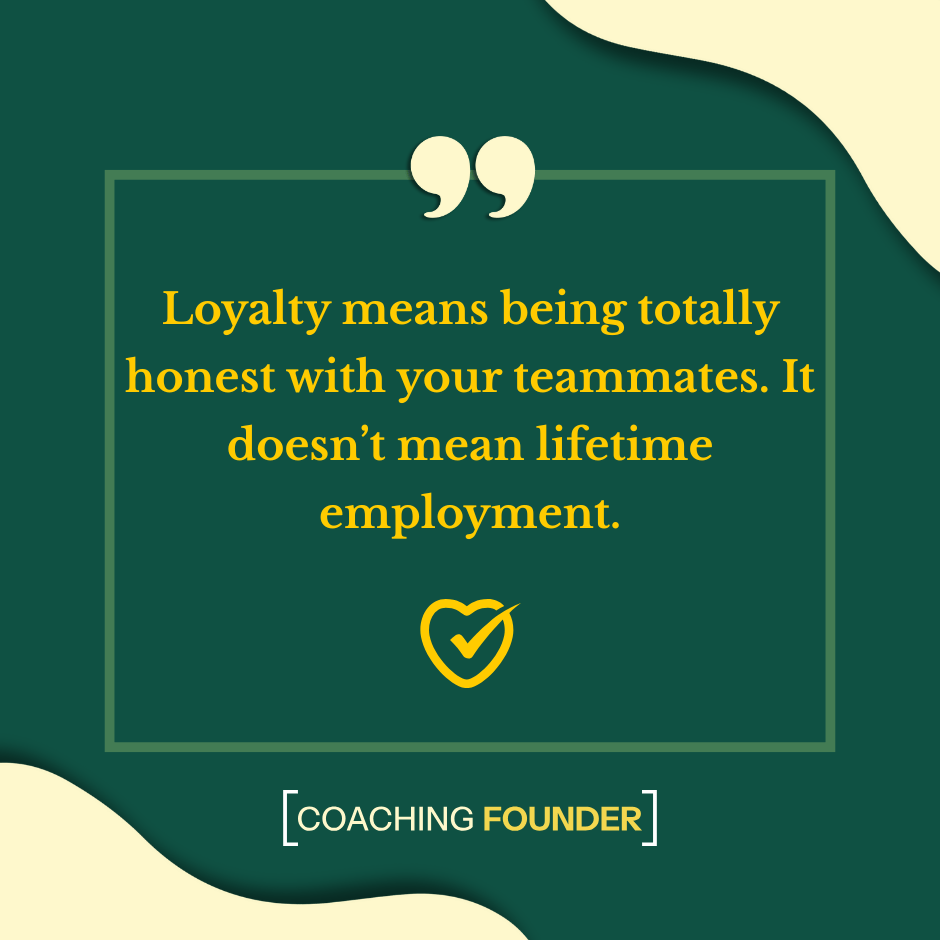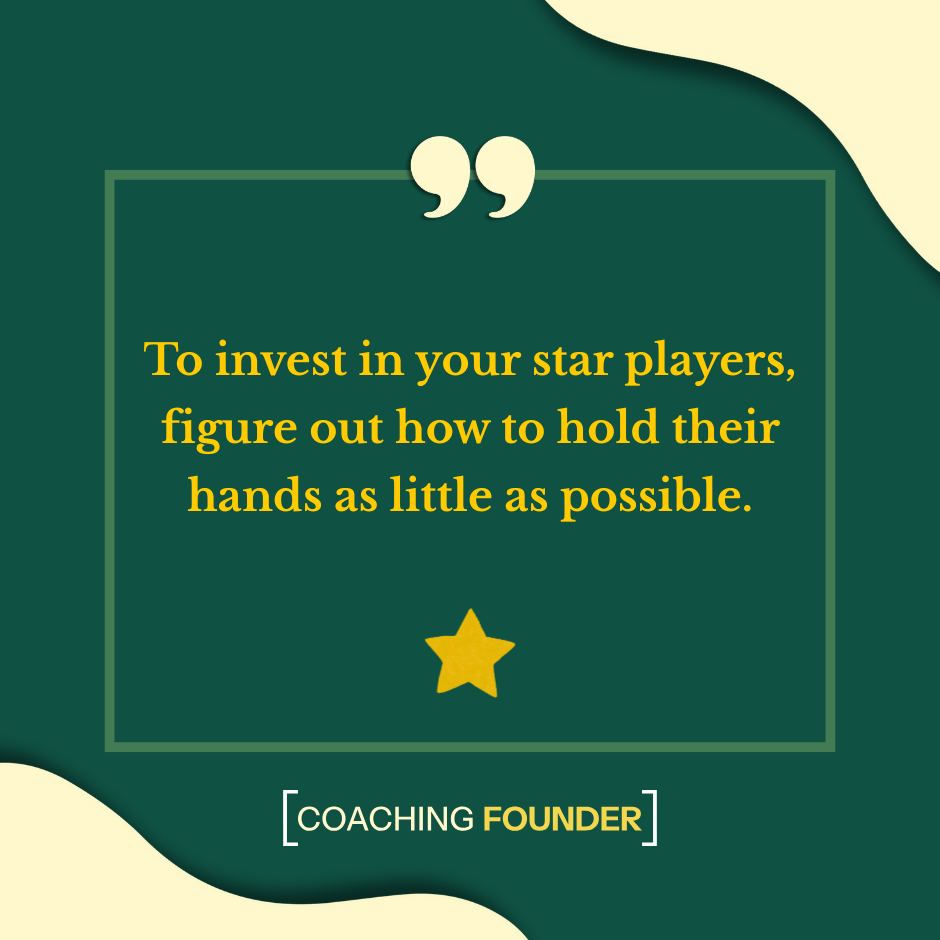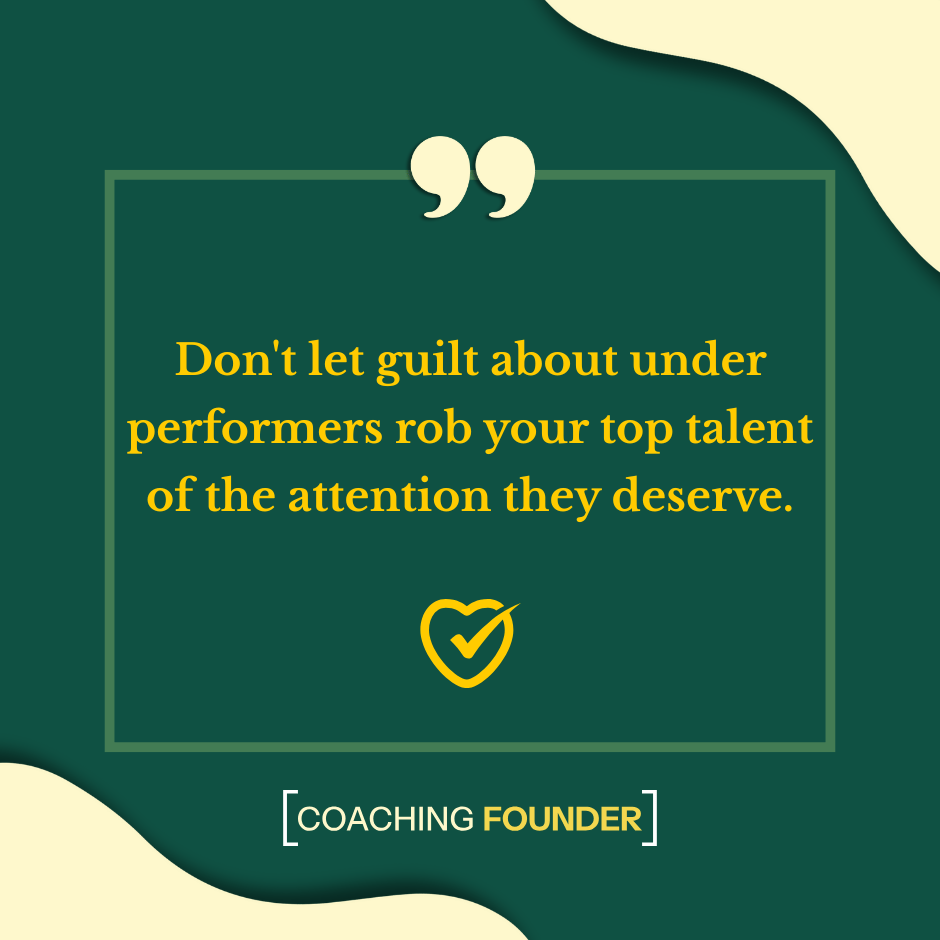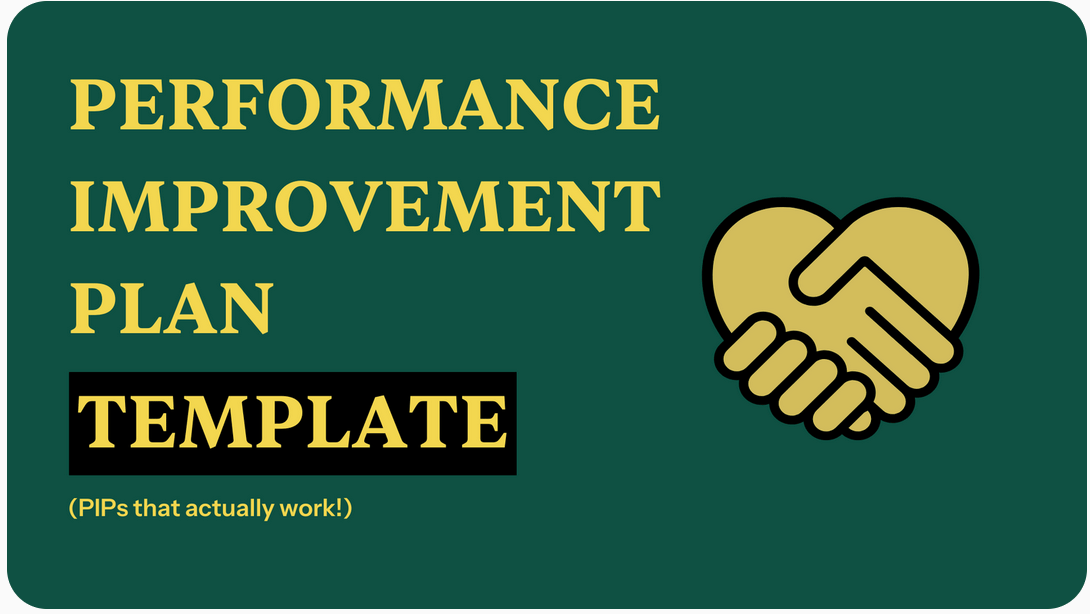- Force Multipliers
- Posts
- The High-Leverage Leader’s Guide to Talent ROI
The High-Leverage Leader’s Guide to Talent ROI
The hidden cost of coddling underperformers: Are you rewarding the wrong people on your team with your time and attention?
This edition is special, because I had two separate operators write in the same question! I’ll include both for you to read below…
Dear Regina,
I have a small handful of people at my company who are real needle movers that drive progress and impact here. Their output and mindset clearly stand out and I trust them immensely.
Unfortunately, a lot of my mental bandwidth goes elsewhere. I end up spending so much time focused on reprimanding underperformers.
I feel like I should be spending time developing closer bonds with the needle movers, rather than the people who frustrate me. It’s also just not as fun. I feel like a teacher that spends all their time getting disengaged students to care, while star students get bored and ignored.
I’m wondering:
Am I wrong to want to shift my time toward the people who are already excelling?
How do I deepen my bond with that group without making it feel exclusive or performative?
How do I create those connections consistently, beyond just praise or periodic check-ins?
(CEO, Series C, $150M raised)
Dear Regina,
I'm struggling with how I spend my time as a leader. I have two early employees who are underperforming - one with questionable engineering intuition and poor communication skills, and another working on internal tools. My CTO is hesitant to let them go because they were early employees.
I find myself staying up late trying to get my own work done because I spend my days coaching people who seem uncoachable. I've accepted this situation for too long, partly because we wanted to invest in people's loyalty.
I know I haven't handled this well - I've been condescending in some conversations and haven't hidden my frustrations. I also haven't been direct about needed improvements, which isn't fair to them.
I’ve also had a star teammate unexpectedly quit - in hindsight, I think it’s because I underinvested the amount of time I should have spent with them. I don’t want this to happen ever again.
How do I maintain high talent density while being fair to early employees for their loyalty? How can I better balance my time between coaching underperformers and getting my own work done?
(VP of Engineering, Series B, $2M raised)
Dear Operators,
It’s easy to get distracted by under-performers. It’s easy to rob your biggest talents from the time they deserve with you. And it’s one of the quickest ways for you to burn out - no one likes spending time with energy stealers.
When you spend time with people who drain you of your time, you invest your time in the wrong things. Just like you wouldn’t continue pouring money into a failing investment, you shouldn't keep investing your limited time into people who consistently fail to meet expectations. Your time and attention are finite resources - allocating them strategically to your top performers will yield the highest returns for both you and your organization.
In this issue, I’m going to teach you how to shift your time to star players, without the guilt.
The High-Leverage Leader’s Guide to Talent ROI
Part 1: Handling under performers
You can’t make time for your star performers if you don’t first cut the amount of time you spend with the under performers. Therefore, this is the first step.
Step 1: Build a Talent Density Culture.
I’ve previously coached leaders who felt fear around building brutal talent density. They are usually afraid that by enforcing talent density, they’re ignoring other things that matter to them, like loyalty and tenure at a company.
In each situation, I point out that loyalty is not the same as coddling. In fact, by denying your under performers the feedback they deserve to hear, you’re being a disloyal leader. They deserve to hear the truth, even when it’s hard.

You are running a company, not a charity. Keeping low performers is also an insult to your top performers, who see you retaining personnel that accomplish less than half of what they get done.
Being honest with all your teammates, including your underperforming ones, gives them a shot at growth and improvement, or a clean exit.
📖 Story Time 📖
I once talked with a VP of Engineering at a fast-growing AI startup. He was frustrated at a few under performers on his team and lamented that he felt like he was wasting his time chasing them down constantly for deliverables, and correcting their sloppy code.
During our sessions, we bucketed his team into two categories: Underperforming Talent, and Investment Grade Talent.
I pointed out that for every second he was spending on his under performers, he was robbing his investment grade talent from time he could be spending with them mind melding. He was wasting away his time instead of turning these high performers into future leaders and manages at the company.
As soon as he saw what he was saying NO to by wasting his time elsewhere, it was a no-brainer to let the under performers go.
🤔 Ask yourself:
Who on my team is in the Underperforming Bucket?
Who is in the Investment Grade Bucket?
Step 2: Execute PIPs well.
If you don’t like the term PIP, call it a Success Plan. It’s all the same: you want your teammates to be successful.
I recommend putting them on a three-sprint Success Plan, to be reviewed bi-weekly. In it, be specific on what success and failure look like. Clearly communicate on what happens in each scenario:
It should be as clear as:
“If you hit all these goals, you will be a 3 out of 5 on performance which is meeting expectations. If you miss any of these, unfortunately we will have to part ways.”
Lastly, be generous if it doesn’t work out (as it is unlikely your struggling performers will actually improve.) I recommend giving them three months’ severance if possible, writing them a glowing recommendation letter for whatever role they would excel at, and act as their personal hiring agent if needed.
FREE RESOURCE ALERT: Download my PIP template for free here! It actually works and doesn’t suck.
I created the above template for a coachee of mine who had a struggling underperformer. In fact - I gave her the above template verbally over the phone, and she was the one who put it together for me into a template.
She said, “This was so effective and so good, you can’t not release this to other operators.”
When she implemented this template, she said her underperformer was sad, but not surprised. She gave the underperformer a day to think about it, not rushing them to make a decision.
The next day, the underperformer told her they didn’t think they could keep up with the PIP’s requirements, and chose instead to part ways at that point. They did so amicably and with zero vitriol. The CEO was relieved:
“In the end, I’m glad I wrote the PIP and gave it to them - because it let them feel like they had some sort of part in deciding their fate. I obviously gave them great severance and recommended them for roles that were more appropriate for them, and they were very grateful,” she said.
Step 3: Deal with your frustration outside of your conversations with under performers.
Admittedly, it’s hard to communicate with under performers and not feel some sort of contempt or anger.
Here are two ways for you to deal with your frustrations effectively:
1️⃣ Actively handle your frustrations and bigger emotions with a coach or therapist.
Stews are great when they are delicious, hearty meals you enjoy during the winter time. 🍲
We do not like emotional stewing.
If you allow yourself to stew, you will develop contempt for your under performers (or co-founders, or spouses, or literally anyone you have to interact with.) Therefore, handle it proactively.
Release in a safe environment where there is an objective third party who can listen to you and hear you out.
2️⃣ Be an above-the-line leader by steelmanning and taking 100% responsibility.
Rather than blaming or behaving condescendingly towards the under performer, subject yourself to a fun brain puzzle. 🧩
Ask yourself: “Why might this person be underperforming? And how can I take radical, 100% responsibility here?”
At the very least, even if you have a belligerent, blatantly-terrible under performer, 100% responsibility means admitting you made the wrong hire (or you haven’t communicated in a way that they can receive, or something else.)
Even if it’s as simple as, “I allowed this person to get away with atrocious behavior for long enough and didn’t nip it in the bud!”, that’s what radical responsibility looks like.
Doing this allows you to have freedom. Why? Because if you have zero responsibility, you are behaving like a victim and everything is out of your control.
But, if you can take some ownership, it puts you in a powerful position to do something about it.
Part 2: Making Time For Star Players
Now that you've dealt with your under performers effectively, it's time to focus on what really matters: your star players.
Step 1: Mind meld with your Investment-Grade Talent through Deep Dives.
The best leaders gain leverage on their time and expertise when they go one-to-many and teach star players how they think, behave, and make decisions.
Therefore, I recommend constantly revealing to your team what decisions you’ve made as an FYI, what tradeoffs you considered, and why you ultimately decided to go the path you’ve chosen.
I had a CTO I coached, Brandon, who did this on a once-a-month basis. Brandon enjoyed researching deep into his industry, which was a complicated one with a constantly-changing landscape.
Eventually, he started doing Deep Dives with his engineering team. Once a month, he’d compile all the most important research he had done reading journal articles, whitepapers, and anywhere else he could get valuable information from. He’d vulgarize it as best as he could, and then explain how it impacted the engineering work his team was doing. He’d also explain what decisions he made as a result of his research, so his team would understand how he thought about information and tradeoffs.
One quarter later, he experienced something miraculous: his entire team was much more on the same page as him than they’d ever been before.
👉️ During these sessions, dive into the "why" behind decisions, discuss industry trends, and challenge their thinking. This is where real growth and alignment happen.
Step 2: Create growth opportunities that matter.
Your high performers need to feel constantly challenged and growing. Give them meaty problems that stretch their capabilities.
Put them in charge of strategic initiatives. Let them lead important meetings and represent the company externally.
To do this, you have to know what each of your teammates enjoy and want out of their career growth. Better yet, if you hire autonomous star players, you can cause them to tell you what they want to work on. This takes the burden off you to create their career path at the company, and instead gives them the agency to determine how they actually want to spend their time.

Step 3: Invest in them beyond what the company can offer them.
It’s pretty typical for leadership at the Director, VP, and C-Suite level to receive coaching.
It’s less common for leadership to think about getting coaching and ongoing educational opportunities for their less senior ICs.
Do this at your own peril: your star performers will find a company who is willing to invest in them if you aren’t.
Here are some low-lift, easy ways to invest in your star-grade talent beyond their day-to-day work:
Send them to relevant conferences to learn.
Sponsor their membership fees into communities where they can learn, grow, and connect with other talent in the same role as them.
Pay for ongoing education through courses, masterclasses, and more.
Conclusion
Your time as a leader is one of your most precious resources. Invest it where you'll get the highest return - with your star players who are already proving their ability to drive massive impact.

Don't let guilt about under performers rob your top talent of the attention they deserve. Building a high-performance culture means making hard choices about where you spend your time.
The math is simple:
More time with your stars = better retention, faster growth, and a stronger company.
Now go forth and invest wisely.
Until next time,

Resources Mentioned 📌
Performance Improvement Plan Template | Coaching Founder
Was this newsletter forwarded to you? Are you here for the first time? If so, remember to subscribe below…
Want more operational content?
Check out Coaching Founder for over a dozen free, downloadable Notion templates to use at your company, and tons of write-ups on how to level up your execs, your teams, and yourself.
About Regina Gerbeaux
 | Regina Gerbeaux was the first Chief of Staff to an executive coach who worked with Silicon Valley’s most successful entrepreneurs, including Brian Armstrong (Coinbase), Naval Ravikant (AngelList), Sam Altman (OpenAI / Y Combinator), and Alexandr Wang (Scale). |
Shortly after her role as Chief of Staff, then COO, she opened her own coaching practice, Coaching Founder, and has worked with outrageously talented operators on teams like Delphi AI, dYdX, Astronomer, Fanatics Live, and many more companies backed by funds like Sequoia and Andreessen Horowitz.
Her open-sourced write-ups on Operational Excellence and how to run a scaling company can be found here and her templates can be found here.
She lives in the Pacific Northwest with her partner Lucas and dog Leia, and can be found frequenting 6:00AM Orangetheory classes or hiking trails nearby.


Reply